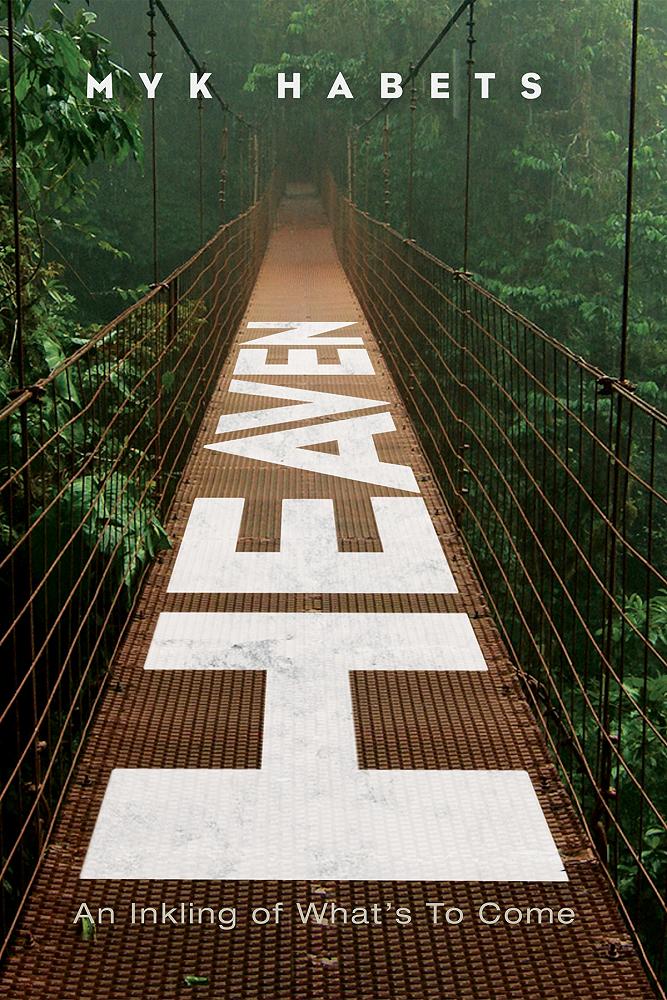
Book Review: Heaven: An Inkling of What's to Come
Myk Habets
There’s a particularly worrying phone call which most of us will one day receive: “Hello, this is your doctor. There’s nothing to worry about, but could you come and see me first thing tomorrow morning?”
I have had four such phone calls in the past decade, the last one, strangely, on the day after I began reading Myk Habets’s book. Each of these conversations has driven me to revisit what I think will happen on that day when I finally step out of three dimensional reality. I believe that whatever lies over the horizon for me will be characterised by the most complete picture of reality we are ever going to get, namely the life, death and resurrection of our Lord Jesus Christ. Like a child emerging from the womb into the real world, I will, sooner rather than later, emerge from this current reality into one that is infinitely bigger than I can imagine but I generally try to set aside guesswork about what that might be like. Catching me when it did, however, Habets encouraged me, happily, in that guesswork.
This is a brief book, 111 pages excluding indices and the concluding study guide. It is written for a wide audience, and several times the author mentions the context of parents answering the tricky questions of their offspring. The chapters are subdivided into sections: “Let’s Listen”, “Let’s Talk” and “Let’s Play” in which the author lays out, in turn, the Biblical basis of the issues addressed, some discussion of those scriptures and then encouragement to toss the ideas around and see where they lead. Each chapter concludes with a bullet point list of the main ideas. His style is chatty, personal and personable. This is an easy read, and I got through the book in a couple of sessions, but the layout and the study guide which concludes the book suggest that Myk Habets intends his book to promote discussion, in families, between friends and in study groups.
The book restricts itself to a specifically Biblical view of the afterlife, outlining the major passages in both Testaments in which some hint is given about what is to follow this life. Habets follows N. T. Wright in positing a two-stage afterlife, with Paradise , or Heaven, being a kind of staging post for the great transformation which lies ahead, the New Heaven and the New Earth so extensively referenced in the Book of Revelation. The subtitle of the book, An Inkling of What’s To Come contains a sly reference to Habets’s other great source, namely C. S. Lewis. The Narnia Chronicles, the Space Trilogy and The Great Divorce are repeatedly referenced and quoted. The author borrows imagery and ideas from Lewis, but also some methodology, in that he is keen that we engage imaginatively with what the scripture tells us of the New Heaven and the New Earth.
For Habets, the life that lies ahead of us is incarnational. That is, we are not to become disembodied spirits floating around in some ethereal eternity, but rather renewed and redeemed versions of our present selves, enjoying all that the best in this life gives a hint of. We will have bodies, and a context in a universe with a kind of physicality. We will have work to do, challenges to face and changes to make. This particularly Christian vision of what is to come is well attested in scripture, and I find it enormously attractive, but it is not without some intriguing philosophical and theological issues, the dealing with which is the book’s biggest shortcoming.
C. S. Lewis was inspirational because his work was continuously informed by his Platonism. There was, in other words, a fully worked out philosophical structure on which those lovely stories were built. Habets, on the other hand, does not seem to have such a grounding. For example, while he stresses the physicality of the life to come, he doesn’t address what it means to be physical. Given what biologists tell us of the construction of our bodies, and what physicists tell us of the construction of matter (in brief, that we are processes rather than things) what does the resurrection of the body mean? How can the New Heaven and Earth involve growth and challenge without also involving loss and therefore pain? What does it mean to have a soul – that is, to be sentient and conscious? Habets is a bit light on these questions, but unfortunately, this is exactly the sort of question that his intended audience struggles with. My four year old grandson, for example, recently asked me, “is heaven before or after space?” And I’ve got to admit the question rocked me, with my two post-graduate degrees in Theology, back on my heels.
More disappointingly, he sometimes lapses into philosophical incoherence, as when he says on page 88, “Biblical freedom is the freedom to obey, not the freedom to choose to disobey.” But that isn’t my biggest problem with the book. In Chapter 5, The Great Cloud of Witnesses he addresses the question of who will be in heaven? And comes up with the answer, Christians, only Christians. OK. Fair enough. But I have on my fridge, at the moment, a page torn from the Christchurch Press containing a photograph and brief biography of each of the fifty Muslims killed recently in Christchurch. All of these lovely people are, according to Habets, doomed. The five year old boy amongst them, who looks out at me with his great innocent brown eyes, is, according to this book, going to the same final destination as the man who murdered him. So where is the justice in that? What sort of God constructs a universe in which the overwhelming majority of sentient beings is condemned to an eternity of suffering? Given that God holds all things in existence, how can there even be a part of existence where God is permanently absent? To these and other issues, Habets responds with a bit of hand waving. We’ll all understand in the sweet by and by, apparently. It’s this chapter which would, sadly, prevent me sharing this otherwise useful book with anyone who is grieving a non-Christian loved one – that is, pretty much everybody I know. I wish the author had paid more attention to his mentor, C. S. Lewis. In The Last Battle, the character of Emeth, the Calormene and the very premise of the daily bus from Hell to Heaven in The Great Divorce speak of the inexhaustible limitlessness of grace, and provide a kinder interpretation than Habets of John 14:6.
This is a book which is at times exciting and informative. It succeeds in presenting a particularly Christian view of the world to come. It is eminently readable. But several times Myk Habets quotes Lewis’s well known metaphor of the boy eating chocolates. I only wish Habets had been a little more careful to leave some of his own doctrinal and philosophical chocolates in their bag.
Kelvin Wright retired as the Anglican Bishop of Dunedin Diocese in 2016. Currently he works with the Anglican Schools Office and has a private spiritual direction practice. He spends a lot of time meditating, and taking photographs.
